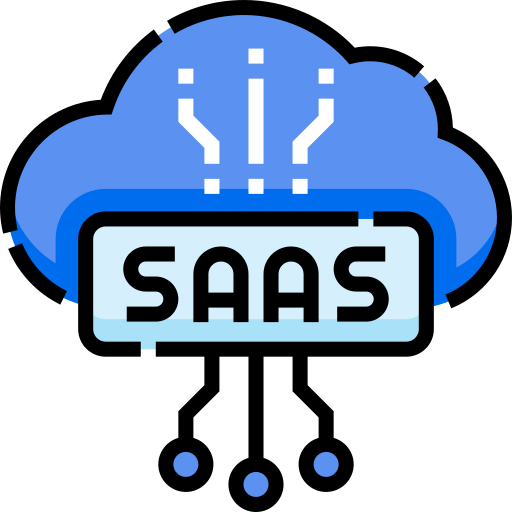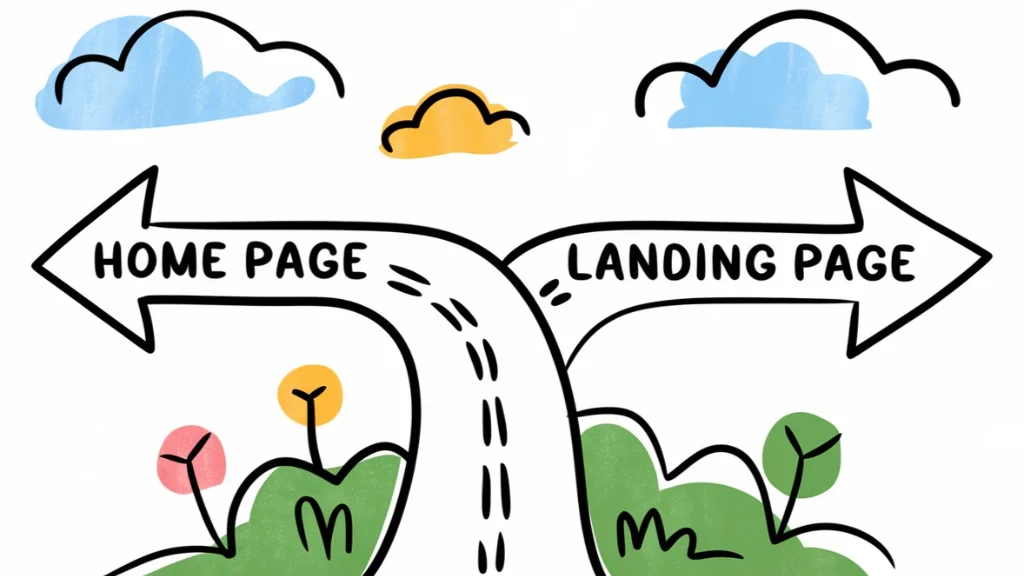Understanding the distinct roles of a home page and a landing page is not just important; it's absolutely critical. Think of it as the difference between a storefront and a targeted sales booth. Each has its purpose, and using them strategically can dramatically impact your business's success. This article will illuminate the differences, highlight their importance, and provide actionable strategies for leveraging them effectively to boost conversions and overall growth.
What is a Home Page, and Why Should You Care?
Your home page is the digital heart of your SaaS business, acting as the primary entry point for visitors exploring your brand and product. It’s like the front lobby of your company. It has to make a great first impression and guide people effectively.
What Are The Key Characteristics of an Effective Home Page?
Here's what makes a home page tick:
- Broad Audience Appeal: It's designed to attract and engage a general audience, including those who may not yet know much about your product. Think of it as a welcoming space for all.
- Navigation Hub: A home page should provide clear pathways to important sections of your site, such as product features, pricing, blog, and contact info. Imagine it as a map to your digital world.
- Brand Storyteller: It should clearly communicate your business's story, your mission, and establish your credibility. Think of it as your brand's first "hello."
Why Is a Home Page So Vital For SaaS Entrepreneurs?
The importance of a compelling home page cannot be overstated. According to a Stanford University study:
75% of users judge a company’s credibility based on its website design.
Your home page often makes the first impression, where trust and authority are built, or lost.
Consider Dropbox, whose home page masterfully showcases its product's value while providing clean navigation and clear CTAs. This allows them to appeal to both first-time and returning users effectively. It’s not just about having a page; it’s about having a page that works.
What Exactly is a Landing Page, and How Does It Function?
A landing page is a focused, standalone web page created for a specific marketing campaign. Unlike a home page, its singular purpose is to drive visitors to take a specific action, like signing up for a free trial, downloading an eBook, or booking a product demo. It's a highly specialized tool designed to convert.
What Makes a Landing Page Unique?
Here are the key differentiators:
- Single, Clear Objective: Every element of the landing page should lead to one single CTA, optimizing for conversion. It's like having a laser focus on a specific goal.
- Minimal to No Distractions: Landing pages typically lack navigation menus, ensuring users stay focused on the intended action. Think of it as a one-way street to a specific destination.
- Tailored Messaging: Content is personalized to the specific campaign or traffic source, such as PPC ads or social media promotions. It's about speaking directly to the user's needs.
Why Do Landing Pages Matter So Much for SaaS Businesses?
HubSpot’s research has revealed that:
Businesses with 30 or more landing pages generate "7 times more leads" than those with fewer than 10.
For SaaS entrepreneurs, where every lead is precious, well-crafted landing pages become essential tools for capturing prospects and nurturing leads. This type of precision targeting can significantly improve your overall lead-generation efforts.
How Do Home Pages and Landing Pages Differ in their Core Function?
Understanding the core distinctions between home pages and landing pages is the first step in effectively allocating your marketing budget. The table below breaks down the key differences:
| Home Page | Landing Page | |
| Purpose | Build brand awareness and provide navigation | Drive specific conversions |
| Audience | Broad and general | Targeted and specific |
| Content | Covers multiple topics | Focused on a single message or offer |
| Navigation | Includes menus and links to other pages | Minimal or no navigation |
| Traffic Sources | Organic search, direct visits | PPC ads, email campaigns, social media ads |
Why is it Crucial for Solo Entrepreneurs to Understand This Distinction?
Solo entrepreneurs juggle various roles, from product development to marketing. Confusing a home page with a landing page can lead to wasted resources and missed opportunities. Here's why differentiating between the two is essential:
- Resource Efficiency: Landing pages enable precise targeting, helping to stretch your advertising dollars by focusing on specific campaigns. It’s about making the most of your budget.
- Higher Conversion Rates: Landing pages designed for a particular campaign tend to perform far better than generalized home pages in driving conversions. This results in more leads and sales.
- Improved User Experience: When content resonates with a user's specific intent, they’re more likely to remain engaged and take the desired action. This leads to better results for everyone.
When Should You Use a Home Page, Versus a Landing Page?
Choosing between a home page and a landing page depends on the customer's stage in their journey and your specific goals. It’s about using the right tool for the right job.
When to Use a Home Page:
- Introducing your brand to new audiences.
- Educating users about your product's offerings.
- Establishing your brand's credibility and trust.
When to Opt for a Landing Page:
- Running targeted paid ad campaigns.
- Collecting leads or driving specific immediate action.
- Promoting specific features, offerings, or events.
For instance, if you're promoting a 7-day free trial, a dedicated landing page focused on highlighting the benefits of the trial and guiding users to sign up would be the way to go.
How Can You Optimize Your Home Page for SaaS Success?
A well-crafted home page lays the foundation for sustained engagement. Here are some tips:
- Highlight Your Core Value Proposition: Immediately show what your product does and why it's valuable. For example, Slack's home page concisely states, "Slack brings the team together, wherever you work."
- Incorporate Social Proof: Use customer testimonials, case studies, and logos of satisfied clients to build trust.
- Optimize for Page Load Speed: Research from Google indicates that "53% of mobile users abandon a site if it takes more than 3 seconds to load." Slow load times can quickly lose potential users.
- Ensure Intuitive Navigation: Make it easy for visitors to find important pages such as features, pricing, and contact information. Clear pathways lead to better user journeys.
What Elements Constitute an Excellent Landing Page?
Landing pages are all about conversion. Here are key components for a high-performing landing page:
- Compelling Headline: Your headline must grab attention and clearly present the value of the offer. Think of it as your opening line to a prospective customer.
- Clear and Strong CTA: Use action-oriented language such as "Start My Free Trial" or "Download the Guide." A strong call to action is a must.
- Minimize Distractions: Remove unnecessary links and navigation to keep users focused. The simpler, the better.
- Build Trust With Signals: Include security badges, privacy statements, or testimonials. These add credibility and trust, which are essential for getting people to convert.
- Ensure Mobile Optimization: With "58% of web traffic originating from mobile devices" (Statista), your landing page has to be mobile-friendly.
For design inspiration, look to landing page examples from companies such as Unbounce. They've consistently helped businesses achieve conversion rates as high as 10% or higher.
What Tools Can You Use to Build and Optimize Your Pages?
You don’t have to be a technical expert to create effective web pages. Here are some tools that can help:
- Home Page Tools:
- WordPress: For flexible and fully customizable websites, WordPress is a favorite.
- Squarespace: This is great for easy-to-use and visually appealing designs.
- Landing Page Tools:
- Unbounce: Excellent for building high-converting landing pages.
- Leadpages: A budget-friendly option for effective landing page creation.
- Instapage: A great solution for more advanced, enterprise-level requirements.
- Analytics Tools:
- Google Analytics: Use this to track traffic and engagement on your pages.
- Hotjar: Great for gaining heatmaps and user behavior insights.
How Should You Measure The Success of Your Pages?
Success metrics differ for home pages and landing pages. Here’s how to track and analyze your performance:
Home Page Metrics:
- Bounce Rate: A lower bounce rate is better; aim for under 50%. This indicates how well your visitors are engaging with the page.
- Time on Page: Aim for an average engagement of 2-3 minutes or more. This shows how interesting and useful visitors find your content.
- Navigation Clicks: Track which links your visitors are clicking on to understand how they are navigating your site.
Landing Page Metrics:
- Conversion Rate: Average conversion rates for SaaS landing pages can range from 2% to 10%.
- Cost Per Lead (CPL): Calculate the return on your ad spend to ensure you're getting the most out of your campaigns.
- A/B Test Results: Always test different elements like headlines, CTAs, and page design, to find what works best.
How Can Solo Entrepreneurs Leverage Both Types of Pages Effectively?
Think of your home page and landing page as a dynamic duo that work together rather than competing against each other. Use your home page to establish your online presence and landing pages to target specific campaigns and promotions. This combined approach will not only enhance your user experience, but it will also boost measurable results. In the competitive world of SaaS, it is important to remember that every conversion counts. By understanding and mastering the tools available to you, you can gain an edge in a very crowded marketplace.







